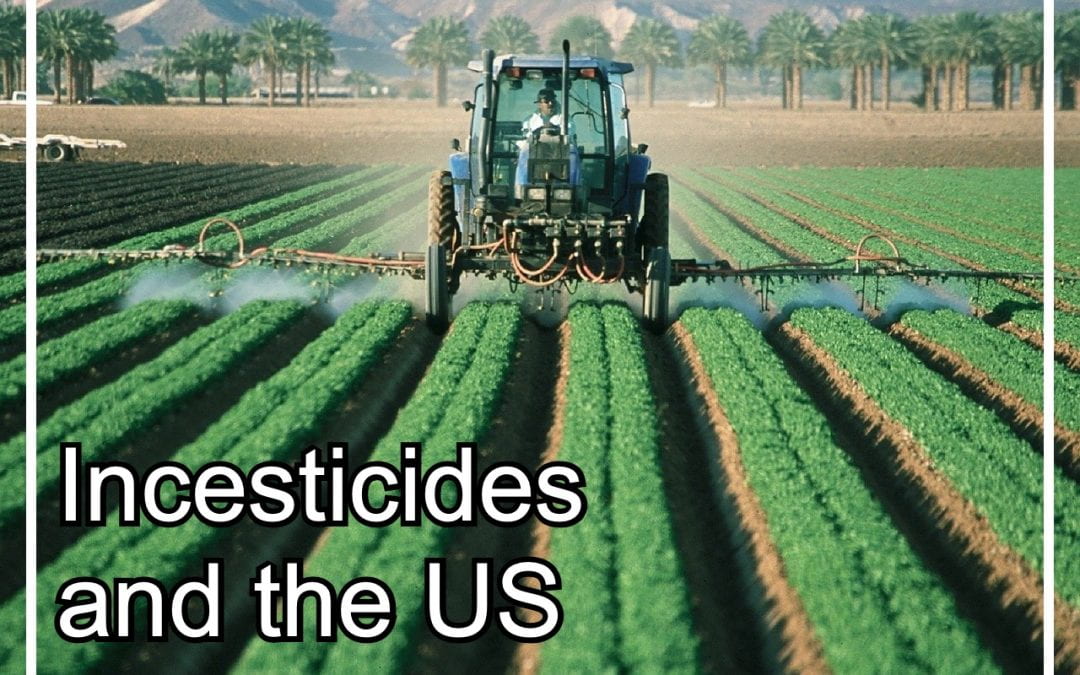Pesticides are an important and common product in use on farms all across the United States and most of the world. While these chemicals are great for farmers protecting their crops from pests, they have many known side effects on pollinators, who are just as important on most farms. One controversial chemical used in pesticides today is Sulfoxaflor. Once illegal in the United States, Sulfoxaflor can be found as the active ingredient in a number of insecticides marketed by Corteva Agriscience. This chemical is used to target various pests such as sugarcane aphids and lygus. However, many experts agree that Sulfoxaflor—contrary to Environmental Protection Agency (EPA) studies—is harmful to bees and other pollinators.
Sulfoxaflor was first introduced in the United States in 2012 under an emergency order to protect crops like cotton from the Tarnished Plant Bug in some states. Quickly the EPA under the Obama administration found a significant loss of pollinators from crops that were sprayed with the chemical. A few months later the EPA issued specific exemptions for sulfoxaflor on certain crops in four different states. Again in 2014, 2015, and 2016, the EPA under the Obama Administration authorized restrictions on the chemical on more crops as more research came out on Sulfoxaflor. By the end of Obama’s term in 2016, sulfoxaflor was banned on crops that attract bees like cotton. The EPA under the new Trump Administration has back away from these restrictions and has issued a long-term approval for sulfoxaflor in 2019. Their reasoning is that it does not affect bees as much as other neonicotinoids and alternative pesticides. Sulfoxaflor is now approved for use on more than 18 different crops across the United States. However, the EPA did place restrictions on use of sulfoxaflor during bloom. This is so the chemical has time to dissipate before pollinators begin to pollinate the crops. This assertion is challenged by critics who claim that the chemical can remain in the soil for a much longer period.
Sulfoxaflor functions similarly to neonicotinoid pesticides and is regarded to be highly toxic to bees. Since it is a systemic pesticide, sulfoxaflor spreads throughout the entire plant. Therefore bugs and animals that eat any part of the plant can be exposed to the toxic chemical. Bees that were fed sulfoxaflor consumed significantly less food, had trouble conducting normal movement, and experienced reduced overall activity. Beehives that were exposed to the chemical saw a reduction in total brood as well as in pollen and honey stores. In studies, individual honey bees fed small amounts of sulfoxaflor showed signs of reduced larvae emergence and survival rates. In some cases, larvae and pupae mortality rates were anywhere from seven to 580 times higher than in colonies with no sulfoxaflor exposure. Additionally, mortality rates in adult foragers were anywhere from three to 20 times greater.
Sulfoxaflor is not the only pesticide being lifted by the EPA. It is a troubling trend in the United States where Federal agencies are lifting restrictions on pesticides that have been previously thought to be harmful to bees and other pollinators. However, despite the fact that other countries like France have banned this type of pesticide, the EPA has claimed this year that five different types of neonicotinoids are safe to use on crops. Neonicotinoids, known to be harmful to pollinators, are a variety of chemicals that are closely related to nicotine and are more deadly to bugs than to humans or other mammals. While these chemicals are extremely effective against pests, they are also extremely harmful to pollinators like bees. If the United States government and the EPA keep on loosening restrictions on these pesticides, we could see a huge collapse of the honey bee and other pollinators in the United States.
While pesticides can be helpful to farmers who need to keep their crops free from pests, their effect on bees and other pollinators must be considered as well. Crops need pollinators just as much as they need to be pest-free. There will be no crops that would attract pests and insects without our pollinators. Otherwise, using pesticides and insecticides would be like burning a candle on both ends. As global bee populations continue to decline rapidly, the EPA must re-examine the use of sulfoxaflor, neonicotinoids, and other harmful chemicals that will exacerbate the decimation of the honeybee.
Do you or someone you know keep bees? We want to hear your story! Pace University’s Pace Docs crew is in the process of producing a documentary about Urban Beekeeping, the latest in a series of award-winning environmentally and culturally relevant documentaries from our department. Contact us at paceudocs@gmail.com. And follow us on Instagram, Facebook, Twitter, and Tik Tok for more content!

